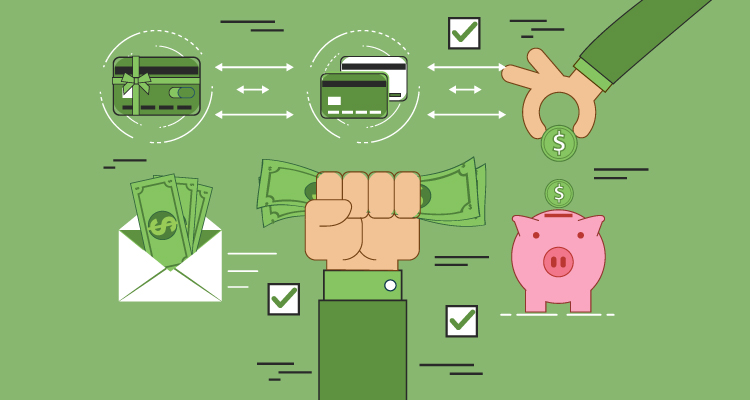In the days my business was a side hustle, I didn’t worry about keeping cash in the bank. When I earned money, I paid myself, set aside a portion for taxes, and knew that my account would refill as I finished client projects and got paid. But today that business is my family’s primary income. If my business account doesn’t get refilled, I don’t get paid.
While I have plenty of savings in case of a rainy day, or a rainy month, I’m now in a situation where I have to decide the right amount of cash to keep in my business checking account and savings account from month-to-month. If you run a business, this is an important decision that shouldn’t be overlooked or ignored.
Table of Contents
ToggleSet a mental minimum balance for each account
When I set myself out into the world of freelancing full-time, my business bank accounts had a fluctuating balance somewhere between a few hundred dollars and a few thousand dollars at any given time. When I took my business full-time, I converted from an LLC to an S-Corp and starting paying myself a weekly paycheck. With over $2,000 per month in payroll expenses, I knew I had to keep more than what I had been in the business checking account.
I upgraded my business banking and opened new business checking and savings accounts at Chase for the new S-Corp. To avoid a monthly $15 charge from the bank, I had to keep at least $1,500 in the bank. For the first few months before I turned on payroll, I used that as a mental minimum to avoid the fee. As my business stabilized and grew, I set a mental goal to keep at least $3,000 in the business checking account to ensure I could go a full month without messing up my payroll. When I hit that level, I flipped the switch at Gusto and started paying myself each week.
Build in a safety cushion and emergency fund
While I knew I wouldn’t have any problems with $3,000 in the bank, I also knew I would have some unexpected expenses, large travel costs for conferences, and lumpy income and expense cycles that were unfamiliar when I had my day job. Now instead of a predictable number of dollars magically showing up every other Friday, I would be billing monthly and get payments when my clients get around to it. With less predictability, I decided to build in a safety cushion.
I started saving until I hit $5,000 in my business savings account and kept a $3,000+ balance in the checking account at all times. I had to pay my rent, moving expenses, and eat, so I couldn’t just add without taking funds out at the same time. But overall, by working hard and earning more than I spent, I saw my account balances grow. I decided I should have at least three months of payroll in the bank. That meant having at least $6,000 in the checking account at any given time, so that was my next goal.
Getting to a comfortable level
I felt a little relief with the knowledge that I had a few months of paychecks stashed away, but my paychecks are hardly a livable wage. I pay myself around $40,000 per year and take additional payments as dividends, a common strategy for S-Corps. At that time I found myself in a new predicament: what is the right amount to save in the bank? Is it $10,000? $20,000? $100,000? At the same time, what could I afford to keep in the bank when I have a family depending on my income?
Over the last few months, I’ve let my business checking grow to around $10,000 and my business savings hover just over $20,000. With $30,000 in the bank, I have as much cash on has as three months of revenue. That gives me more than a few months of pay if my cash flow were to suddenly dry up. After all, I could get sick, lose clients, or run into one of a limitless number of problems that can destroy an otherwise healthy freelance business.

How Much Cash Should Your Business Keep in the Bank? It Depends on Your Spending Habits
I have decided that $30,000 is still less than I’d like to have in the bank, but I absolutely don’t have to worry with that amount stashed away. As a primary income earner for my family, I would feel best off with a full year of income in the bank, but that is both impractical and poor financial management in an era of bank interest rates below 0.1%.
I earned a whopping 38 cents of interest from Chase last month, and I know I can do better investing rather than letting cash sit idly in the bank. My current plan is to let the business grow to around $50,000 in assets before I stop growing my business accounts and funnel all profits into my personal savings and investments.
Don’t let cash flow kill your business
Cash flow struggles is one of the biggest reasons small businesses fail. Do not become a business failure statistic, plan and save for future cash flow issues before they happen to guarantee you can weather the storm if you lose clients, they pay late, or worse. With a solid savings account behind you, you have a lot less to worry about. Once you reach your savings goal, you can stop worrying about savings and get back to worrying about job number one, growing your business.
















